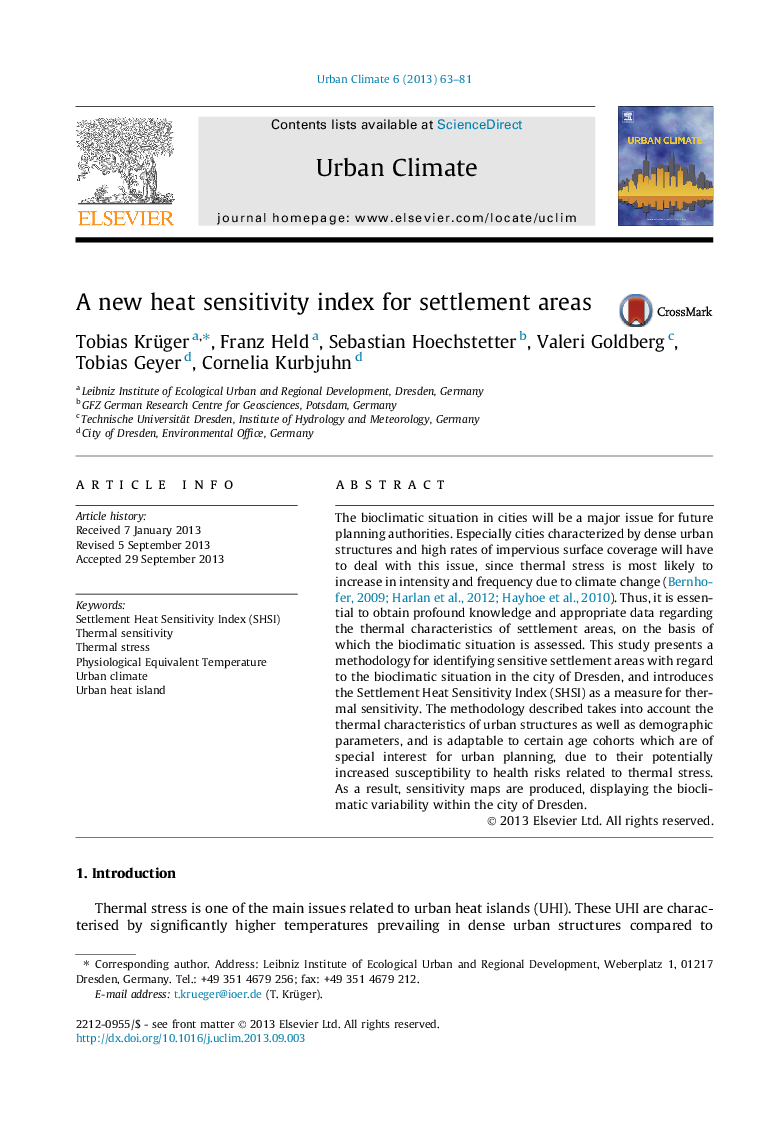| Article ID | Journal | Published Year | Pages | File Type |
|---|---|---|---|---|
| 143797 | Urban Climate | 2013 | 19 Pages |
•Widely available remote sensing data are used for estimating bioclimatic stress in cities.•Sensitive settlement areas with regard to heat stress are identified by means of a newly-defined index.•Bioclimatic stress is directly related to the density of built-up urban structures.•Demographic parameters influence the bioclimatic sensitivity of settlement areas.
The bioclimatic situation in cities will be a major issue for future planning authorities. Especially cities characterized by dense urban structures and high rates of impervious surface coverage will have to deal with this issue, since thermal stress is most likely to increase in intensity and frequency due to climate change (Bernhofer, 2009, Harlan et al., 2012 and Hayhoe et al., 2010). Thus, it is essential to obtain profound knowledge and appropriate data regarding the thermal characteristics of settlement areas, on the basis of which the bioclimatic situation is assessed. This study presents a methodology for identifying sensitive settlement areas with regard to the bioclimatic situation in the city of Dresden, and introduces the Settlement Heat Sensitivity Index (SHSI) as a measure for thermal sensitivity. The methodology described takes into account the thermal characteristics of urban structures as well as demographic parameters, and is adaptable to certain age cohorts which are of special interest for urban planning, due to their potentially increased susceptibility to health risks related to thermal stress. As a result, sensitivity maps are produced, displaying the bioclimatic variability within the city of Dresden.
